Story by Pete Vack
Earlier this year, Brandes Elitch returned from Pebble Beach with photos of one of the most significant and interesting Alfas we have encountered recently, igniting our curiosity. From a variety of sources, VeloceToday uncovered letters from the designer himself, Count “Johnny” Lurani, a description of how the car was found by an American Alfa enthusiast, original drawings of the tubular chassis, a Touring drawing of a proposed body for the chassis, a rare Colli bodied sister car, and a few photos of other cars bodied by the Riva brothers of Merate, Italy. And that’s just for starters!
A Mystery Alfa in Hemmings
It would be nice to think that this stunning Alfa CABI-Cattaneo Riva 6C2500 now owned by Stephen Bruno is still around and restored thanks to Homer Tsakis, was one of those rare guys who recognized the value of post war Italian cars and gave them a home when no one else wanted them. His large barn garage at Tip Top Farm where he lived in Katonah, New York was full of interesting cars; a Gullwing Mercedes, a Nardi-Danese and at the time we visited him in 1988, a 6C 2500 Villa d’Este.
It was his pleasure to give a home to Italian orphans and ensure that cars, when sold, found an appreciative new owner. At some point of time, Tsakis had found a rare and unidentified Alfa 6C 2500-based car that had an attractive aluminum coupe body. By 1975 he put it up for sale in the ubiquitous Hemmings. Alfa enthusiast Bob Tucker responded to Homer’s ad and began to negotiate. Tucker learned that in addition to everything else, Tsakis was interested in Maseratis. Two old four-cylinder Maserati engines were found near Detroit; Tucker put them in a truck and hauled them off to Homer’s place. The exchange worked. “I can’t be sure of who ended up with the more valuable end of the trade but I’m sure happy with the car,” wrote Tucker.

From the rear, the Lurani design was elegant and purposeful. No gimmicks or unnecessary lines. Photo by Brandes Elitch
And what did Tucker drag home? What he thought was an Alfa had very few Alfa components: “Alfa script knock-offs, short pieces of the rear trailing arms which were welded to a Corvette rear suspension and some front suspension components.” The engine was a Pontiac V8 mated to a LaSalle transmission and that Corvette rear end. The aluminum body was adorned with a number of ill fitting fixtures and the windshield was from a 1959 Studebaker. The chassis was a tubular affair, not the channel iron frame 6C 2500. It was, as advertised, a mystery car.
Count Lurani to the Rescue
But Tucker persevered. But he needed information and there wasn’t any. Finally a friend found a reference to the car in a Motor Trend from 1951, which stated the car was coachbuilt by “Riva” and produced by Johnny Lurani. Tucker wrote to his friend Alec Ulmann, who wrote to Lurani, who in turn was glad to provide the information so necessary for restoration.
“I am very interested in knowing that you own the famous old Alfa that I built,” wrote Lurani in a letter to Tucker dated April 11, 1980. Tucker of course was eager to know all about the car. The Italian did not disappoint.
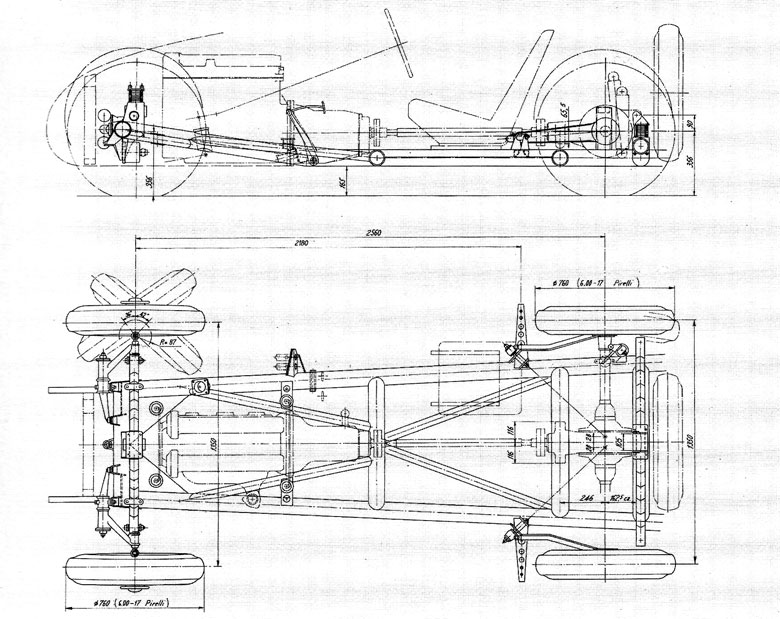
This drawing of the Cattaneo chassis is from “Alfa 6C 2500” published in 1993. Author Tito Anselmi wrote: “A very promising project was undertaken in 1949 by the Milanese engineer Guido Cattaneo, owner of the CABI.” The frame was made of tubes of large diameter, built by Gilco.
“In 1950 Engineer Guido Cattaneo built one prototype chassis in his factory in Milan,” wrote Lurani. Cattaneo used Alfa parts for the car including a new 6C2500 engine from Navy surplus, and suspension, brakes, transmission from the 6C 2500 series. The engine apparently had a dry sump and the chassis was described as tubular with sporting characteristics.
Cattaneo asked Lurani to design the body. Enter the Riva brothers, whose shop in Merate was only “500 yards away from my country house.” The car was built under Lurani’s personal design and control. “The design was very advanced for the time and the streamlining was really efficient and elegant.”
When completed, Lurani drove the car to the Venice Grand Prix Concours d’Elegance and won the Grand Prix of Elegance. It was a huge success. “The car was then delivered by Cattaneo to his customer, a young industrialist in Milan, and we never saw it again. It was soon sold to the U.S. at a bargain by its first owner.” A few years later, it ended up with Homer Tsakis before it was purchased by Bob Tucker.
Coachbuilder to Count Lurani
Lurani had a long history with the nearby Riva shop, dating to before the war and Lurani’s famous “Nibbio”. The Riva brothers had been called upon to do various jobs for Lurani’s car habit, and it was only natural that they assist with the building of this famous record breaker.

The 1935 Lurani Nibbio was destined to break records. Despite its 500cc Moto Guzzi engine, the car was capable of more than 100 mph. It received the Best of Show by public referendum at Villa d’Este 2017, better known as Coppa d’Oro. Hugues Vanhoolandt photo.
The remarkable new Lurani designed body was not first seen on the Cattaneo chassis, but developed earlier by both Lurani the Riva brothers. And, elements of the design would live on via Fiat sedans and even commercial vehicles.
Tipo Monza
In 1949, Lurani called on his close neighbor to rebody a BMW 328 to his design specs. Very similar to the later Alfa Cattaneo effort, the hoodline was much higher due to the BMW six. Designated (perhaps only informally) the ‘Monza’ style, several more Fiats were bodied using the same buck, one being made for his wife. Writes Italian historian and author of Italian Coachbuilders, The Master of Style Elvio Deganello, “The BMW-Veritas bodied for Count Lurani caught the eye of his wife Ivonne who asked for a Fiat 1100B chassis to be bodied in the same style.” The press took notice and soon others were ordering their “Tipo Monza” based on the 1100.
Tipo Serenissima
Lurani then called upon Riva to body a tubular chassis designed by his ‘great friend’ Guido Cattaneo, which resulted in our subject car, the Alfa 6C 2500 CABI-Cattaneo Riva, looking much like his BMW 328 but with a lower hoodline, made possible by placing the Alfa six much lower in the Cattaneo chassis. Although almost identical in line to the earlier Fiat 1100 Tipo Monza, it was dubbed the “Serenissima.”

Named the “Serenissima”, the Alfa-based, Cattaneo chassied, Lurani designed car was the only one to be bodied by Riva. Photo by Brandes Elitch
Touring and Cattaneo
But Riva was not the first choice. The Cattaneo chassis was originally to be bodied by Touring, with whom Cattaneo had a relationship as well. Writes Anselmi, “Guido Cattaneo himself, a fraternal friend of the Touring owners, spent many hours with the coachbuilders to collaborate with the designers to achieve the definition of a model that would have any represented his ideal: a berlinetta in which the shape of the back and tail are very reminiscent of the style Touring adopted at that time for Ferrari’s 166 type Le Mans.” It was only after the Touring deal fell through that Cattaneo approached Lurani. The final result, we think, easily tops the Touring Ferrari look alike.
Colli and Cattaneo
While not mentioned by Lurani, according to some sources, there was a second CABI-Catteneo tubular chassis with Alfa components which was bodied by Colli. Cattaneo’s shop did not build the chassis, he had famous chassis builder Gilco construct it to his plans. Deganello shows a Colli-bodied coupe, “…bodied on a Gilco chassis for Cabi Sas (Cattaneo Industrial patent application) of Guido Cattaneo, son of the Isotta-Fraschini designer Giustino Cattaneo.”
As Lurani described in his letter to Bob Tucker, he regretted that no further ‘big’ GT cars were built to his design. Riva, however, construction perhaps 10 Fiats based on Lurani’s design, even incorporating the elements into a station wagon. But Riva would concentrate on the commercial, truck and advertising vehicles until they closed shop in 1978. For them, the GT/Sports car market never really offered any profit, though the few sporting cars they did make brought them world wide attention.
Sources
Italian Coachbuilders, The Master of Style, Elvio Deganello, NADA, 2016
La Passione 6C 2300 – 6C 2500 Dohren, AlfaPoint, 2019
Letters found on Coachbuilder.com
Auto Italiana, 1951
Alfa Romeo 6C 2500 Anselmi, Editoriale Domus, 1993
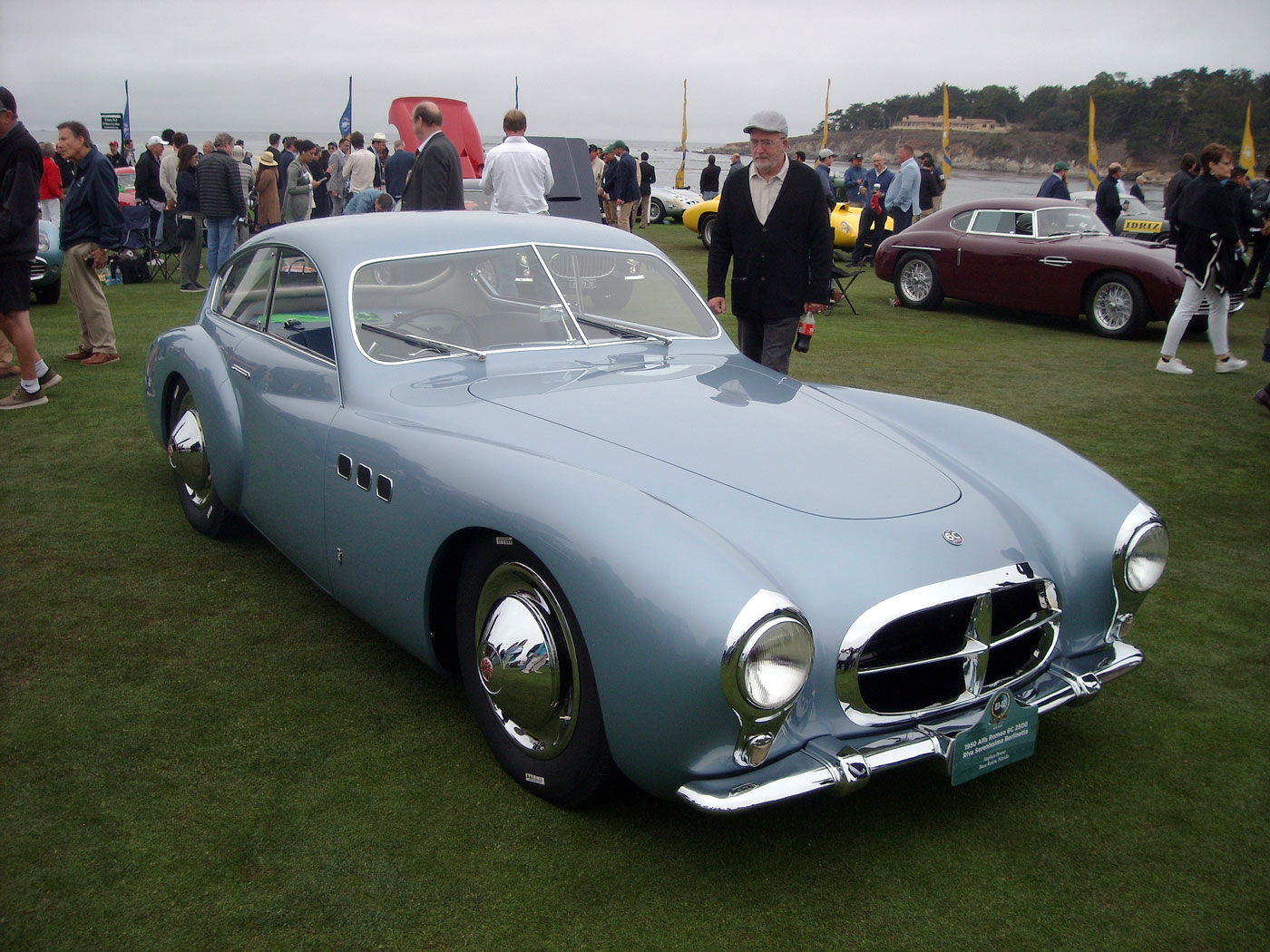
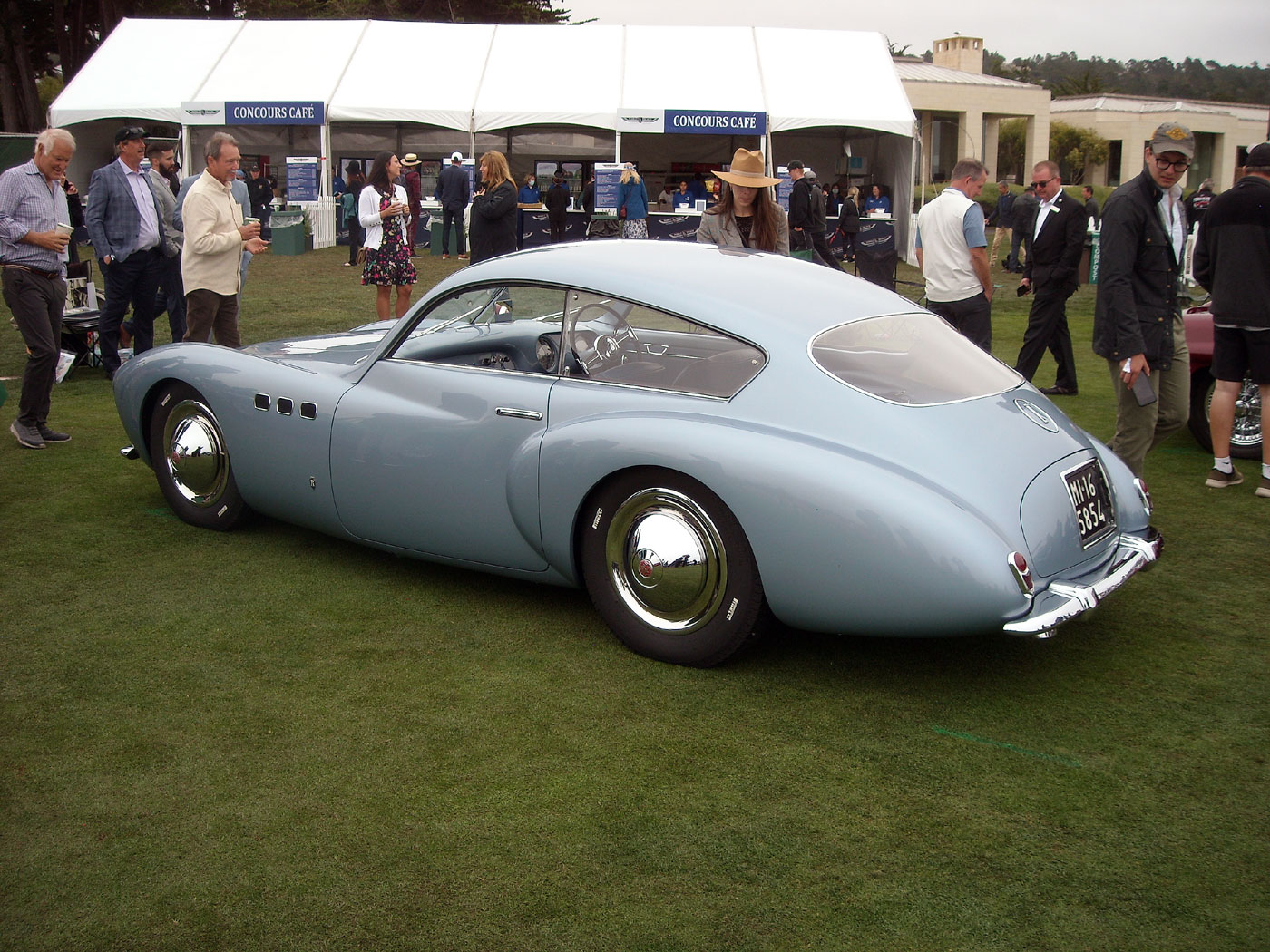
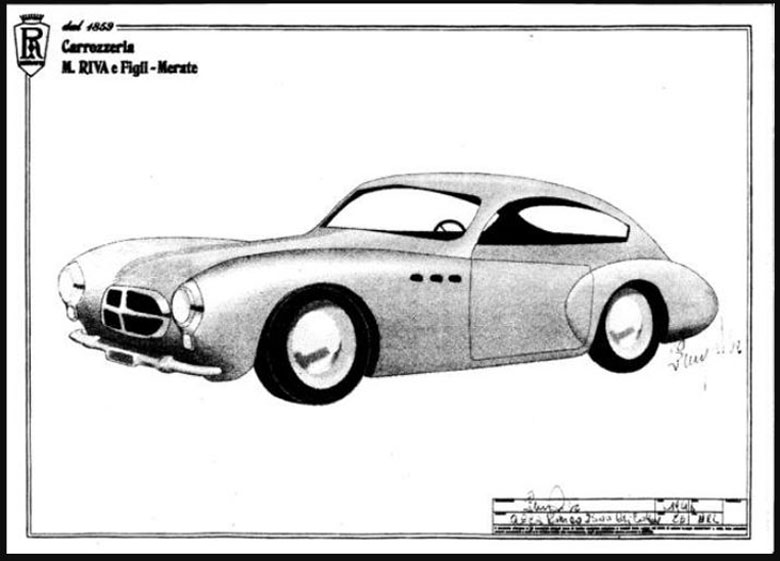



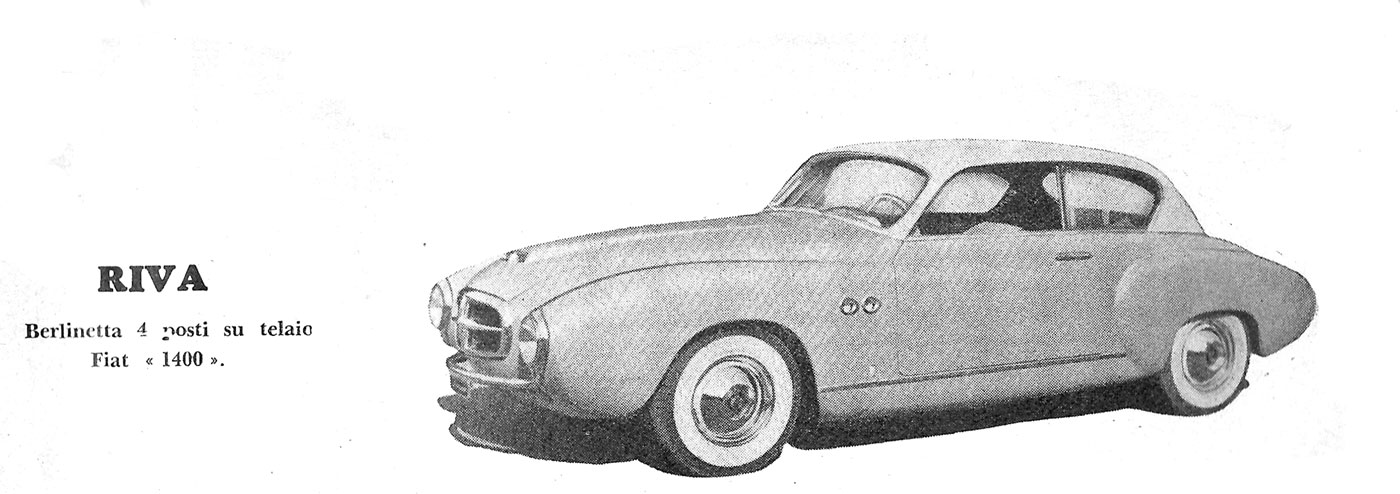
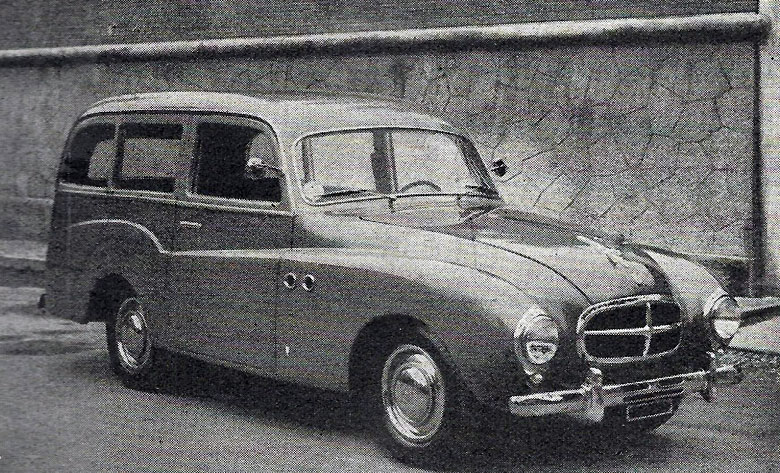
I am happy to see this Alfa Cattaneo/Riva so nicely restored. I had seen it many times in the Tucker’s shop and once at Italian Happening, Detroit, always in the “raw”. It is a tribute to it’s caretakers over the years that it survived to become again the Rolling Art of her designers.
Great article on a very intriguing “Alfa”‘ Pete. Thanks for giving us more insight into this car’s history, a history that once seemed impossible to discover.